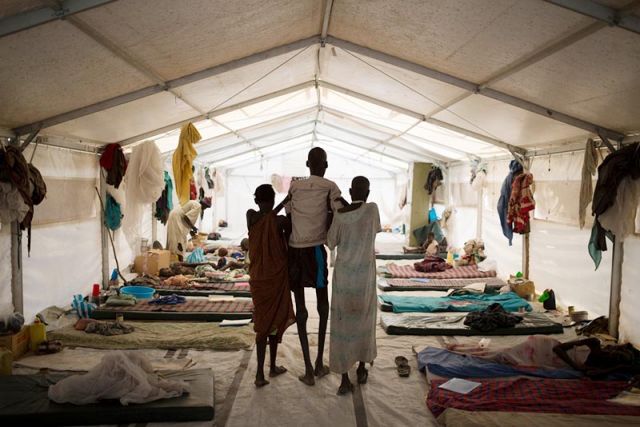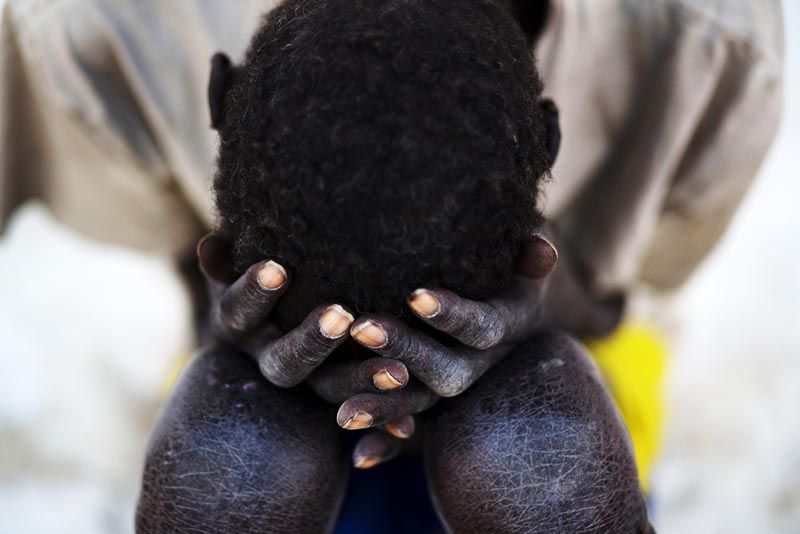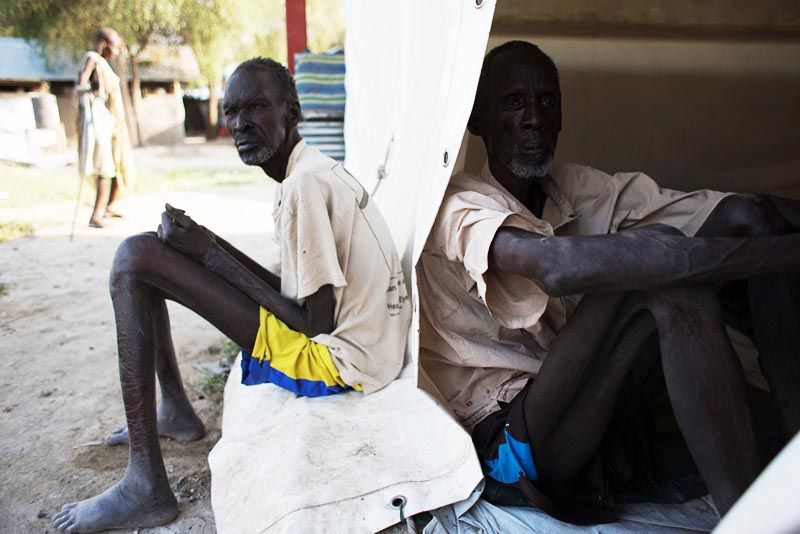Karel Prinsloo is an award-winning South African photographer who has spent 25 years largely working in Africa. Originally a news photographer, he has covered numerous conflicts and crises and was Chief Photographer for Associated Press covering East and Central Africa for over a decade. Today, Karel works mostly for NGOs as a freelance photographer and is based in Johannesburg.

One morning, I caught sight of Ruai aged 56, being bathed by his wife Yakuony outside the hospital tent. He was in a very frail state and she was gently sponging him, helping him along. It was such a tender moment that I hesitated to take a photo. This image is of Yakuony (right) with an assistant helping Ruai back to his mattress after his bath. I was struck by the way they were supporting him. I took the picture from behind so as not to invade his privacy.
Later that day, I sat outside the hospital tent with a group of patients trying to keep cool. Temperatures get up to 38 °C in the shade in Lankien and inside the tents, it’s even hotter. You get very tired. At one point, one of the men suddenly sunk over with his head on his hands. He was obviously experiencing some kind of deep anguish. Both the disease and its treatment is very unpleasant, including months of painful daily injections directly into the muscles in your backside. I felt this was a powerful picture showing his helplessness against the overwhelming pain.
When I take photos, my automatic response is to become very focused on my own safety; I can’t do anything for anyone if I’m not safe. Then I think about the subject and the mechanism of photography. I like to make people aware of my presence by sitting or talking to them for a while. It’s a very personal space that you’re intruding on and you want to feel their acceptance.

I approach my photography from a news perspective, with straightforward, clean images. I find that overly artistic shots just confuse viewers. I avoid cluttered backgrounds, or extreme angles and lenses. I use minimal equipment and lenses that see like the eye does, avoiding distortion. The only editing I do is adjust the brightness and contrast, as you would in any dark room. The only reason I’m there is to tell people’s stories, so I try to take the most honest picture of what’s happening in front of me. It’s my way of conveying their message to the world.
I know I’ve saved lives through my photography, sometimes just by being there with a camera. Once I was in LRA territory, in northern Uganda with a colleague. We were covering the aftermath of a huge attack. A little boy wearing a scout uniform had been picked out as an LRA soldier and the crowd rushed over to beat him. They had killed someone earlier that day. We literally grabbed the child out of the mobs’ hands and said, “He’s with us.” He wouldn’t have survived otherwise.
If you can save even just one life, that’s the most amazing thing."
Read more of MSF's activities in South Sudan
